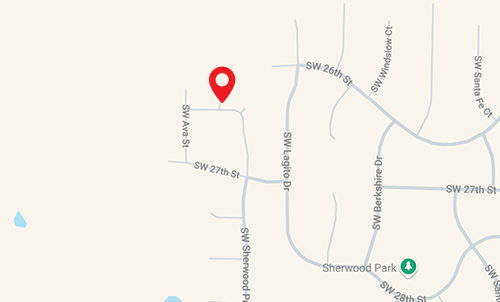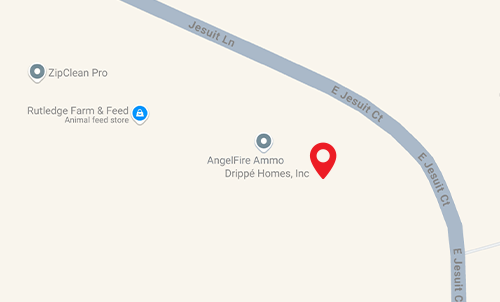
Our 1-Year Warranty
We want you happy after you receive the keys too! If there are any issues that arise, we stand behind our product with our 1-year Warranty. You are able to report any warranty issues with either of the two buttons below, and someone from our team will be in touch shortly.
Needing to Make a Warranty Claim?
Please use this button to make a non-emergency warranty claim if you are still in qualification for
our 1-year warranty coverage. This warranty claim can be fixed during normal business hours.
Have a Warranty Emergency?
Please use this button to notify us of your Warranty Emergency and we will be in touch as soon
as possible. An emergency claim needs attention outside of typical business hours.
Frequently Asked Questions
Learn more about your home and what is covered in our 1-Year Builder Warranty.
General Questions
Our 1-year warranty covers defects in materials and workmanship in the construction of your home. This includes items such as roof leaks, plumbing leaks, heating and cooling system failures, and other issues related to the construction of the home.
To report a warranty issue, please visit this link here. This will open a request form that can be filled out and submitted. Once submitted someone from our team will contact you.
Plumbing
Toilets are not caulked to the floor entirely so if a leak does happen to develop it will present evidence. It will cause far less damage if a leak is identified as soon as it starts. The wax ring between the throne and the flange is what creates the seal. If that fails or becomes damaged it is imperative to address the situation as quickly as possible to avoid additional damages.
The irrigation system can also develop leaks that would need to be identified. Water trickling steadily out of an irrigation head long after the irrigation system has turned off could indicate a leaking- or weeping- valve below ground. The diaphragm seal may have worn out and water is seeping freely through 24/7. It could also mean the valve is clogged, preventing it from fully closing. If it hasn’t been raining, but your lawn is soaking wet and the ground is saturated, you could have a leak. Water-soaked driveway or walkway: If your driveway or walkways are wet while the system is not running, even in dry weather, the excess water could indicate a sprinkler system leak.
- The dishwasher may not be properly loaded, causing dishes to block the spray arm and preventing water from reaching all of the dishes.
- The dishwasher may not be leveling properly, causing water to pool in one area of the dishwasher and not reach certain dishes.
- The dishwasher may not be filling with enough water, causing a poor wash performance.
- The dishwasher’s spray arms may be clogged with food debris, preventing water from reaching all of the dishes.
- The dishwasher’s heating element may not be working properly, causing dishes to not dry properly.
- The dishwasher detergent dispenser may not be working properly, not releasing enough detergent to properly clean the dishes.
- Check your sump pump regularly: It’s a good idea to test your sump pump regularly to ensure that it is working properly. You can do this by pouring a bucket of water into the sump pit and watching to see if the pump kicks on and removes the water.
- Check for debris: Occasionally, debris can accumulate in the sump pit and clog the pump. You should check the pit for debris and remove any that you find.
- Check for leaks: Check the sump pit and pump for any leaks or signs of damage. If you notice any leaks or damage, it’s important to have them repaired as soon as possible.
- Consider professional servicing: If you’re unsure about the condition of your sump pit or pump, or if you haven’t had them serviced in a while, you may want to consider having a professional inspect and service them.
In general, it’s a good idea to check your sump pit and pump at least once every three months, and to have them serviced by a professional every year, depending on usage and the manufacturer’s recommendations.
- Regularly inspect your home: Check your home regularly for signs of leaks or water damage, such as water stains on ceilings or walls, mold growth, or musty odors.
- Maintain your plumbing system: Have a plumber inspect and maintain your plumbing system regularly to catch any potential issues before they become major problems.
- Replace old or damaged plumbing: If you have old or damaged pipes, consider replacing them with newer, more durable materials like copper or PEX.
- Install a water leak detection system: Consider installing a water leak detection system, which can alert you to leaks before they become major problems.
- Install shut-off valves: Install shut-off valves on all water-using appliances, such as washing machines and dishwashers, to prevent leaks from becoming major water damage incidents.
- Keep gutters and downspouts clean: Make sure your gutters and downspouts are clear of debris to prevent water from backing up and causing damage to your roof and walls.
- Monitor your water bill: Keep an eye on your water bill for any sudden increases, which can indicate a leak.
HVAC
- Change filters regularly
- Clear debris, clutter, weeds, or other landscaping from your outdoor unit, it may restrict airflow
- Keep your family pets away from an outdoor unit; urine can cause extensive, expensive damage
- Use extra caution using a string weed eater around your outdoor unit to avoid damaging wiring or cooling fins.
Electrical
Doors and Windows
My windows are working so hard they are sweating!
While this may be an entertaining punch line of a cartoon, sweating windows are no laughing matter. In fact, the windows themselves do not sweat.
Condensation is the result of environmental conditions that allows the moisture in the air to collect on the glass or window frame in a home. This effect is similar to the presence of dewy grass on summer mornings or the fogging of a mirror after a hot shower. When conditions are ripe, condensation can appear on either the inside or the outside. So what are those conditions?
The dew point is the temperature at which the air is fully saturated with moisture, or humidity. When a surface is cooler than the dew point, moisture is drawn out of the humid air and “condenses” on the cool surface. A good example of this effect is a glass of cold ice tea on a hot, humid day. In a matter of minutes, the cold glass will begin to draw moisture out of the humid air and beads of moisture will appear on the cold glass.
In short, large temperature differences from the air to the glass or window frame coupled with high relative humidity creates condensation or “sweating windows”.
Condensation can be very problematic and damaging, potentially resulting in:
- Damp feeling inside the home
- Discoloration of interior surfaces
- Mold or Mildew on surfaces
- Warped wooden surfaces
- Peeling or blistering interior or exterior paint
- Sweating Pipes
- Damage to walls or framing members
In fact, some newer homes can actually be more susceptible to condensation. Newer homes are constructed with more weather tight materials than older homes. Vapor barriers and modern construction methods are designed to reduce air leakage. At the same time, these can act to seal in moisture. Unless provisions are made to allow the moisture to escape, moisture buildup can result.
The most effective way to alleviate condensation concerns is to control the relative humidity inside your home. Drier air is less likely to condense. The following tips will help with humidity:
Use exhaust fans in rooms where water is being used heavily: bathrooms, kitchens, even laundry rooms. If exhaust fans are not available, crack windows If you use a humidifier, be sure it is set to the correct outside temperature. An improperly vented clothes dryer will introduce significant moisture. Be sure the dryer is venting properly and completely.
Be sure crawl spaces, attics, or basements are properly ventilated.
Install energy efficient windows.
No window can “prevent” condensation from occurring. However, the more energy efficient windows will reduce the probability of condensation forming. Metal frame windows are notorious for condensation because metals transfer energy very rapidly, moving the outside temperature to the inside of your home and creating a “cold” spot for moisture to collect.
Vinyl framed windows will maintain warmer inside temperatures and decrease the likelihood of “cold” spots ripe for condensation. In addition, glass packages can have a significant impact on condensation. Advanced coatings and spacer systems will maintain warmer temperatures inside the home.
Even the highest performing window will not eliminate condensation. Large temperature differences with humid conditions can cause condensation to occur on even the best window on the market.
Please consult our Full Energy Results page to find WeatherBarr products with low U-Values and high Condensation Resistance Factor (CF) that can help control your condensation problems.
The exact position needed may slightly different depending on the temperature and relative humidity conditions. Interior doorways should have a gap under them to allow air flow. When the HVAC system is running air is being exchanged all throughout the home. Gaps at the bottom of doors help the HVAC system access all parts of the home.
The R-value of a window can range from R-1 to R-5, with higher values indicating better insulation. Some high-performance windows can have R-values up to R-7. The exact R-value of a window depends on several factors, including the type of frame and glazing, the number of panes of glass, and the type of gas fill between the panes (if any).
When selecting windows for a home, it is important to consider the R-value, as well as other factors such as the window’s U-value (a measure of heat loss), the Solar Heat Gain Coefficient (SHGC), and the visible transmittance (VT). These factors will determine how well the windows will perform in terms of energy efficiency and comfort.
If any of the components of the doors, casing, or framing has experienced any shrinkage or settling then additional adjustments may be required. The hinges can be adjusted to impact the swing of the doors. The catch plate can be adjusted to occupy the new resting place of the ball when the door is in the closed position. Or you can wait for the season to change and the humidity change involved could very well make things operate as intended.
Lot/Landscape
Some areas may also have sandy soils or those with a higher clay content. Additionally, it’s important to note that this region can be affected by soil erosion and other issues, such as loss of organic matter and changes in pH levels. Our experience has been, lots available for new home construction contain soils that are heavy clay. Unless we get good topsoil coverage they are not fertile.
On the other hand, sandy soils have larger particles and more space between them, making them more porous and allowing for better water movement and faster percolation. It’s important to note that percolation rate can also be affected by other factors such as soil compaction, vegetation, and the presence of hardpan layers.
Prepare the soil: Test the soil pH and adjust it to between 6.0 and 7.0 if necessary. Remove any weeds, rocks, or debris from the area and till the soil to a depth of at least 6 inches.
Choose the right grass seed: Consider the growing conditions (e.g. sunlight, soil type, climate, foot traffic) and choose the right type of grass seed for your area.
Sow the seed: Broadcast the seed evenly over the soil surface, following the seed packet’s recommended rate. Rake the seed into the soil and then water thoroughly.
Water and fertilize: Water the seeded area regularly to keep the soil evenly moist, but not waterlogged. After the grass has sprouted, begin to fertilize with a balanced fertilizer according to the instructions.
Mow and maintain: When the grass reaches a height of 3-4 inches, mow it to a height of 2-2.5 inches. Maintain a regular mowing schedule, remove grass clippings, and water as needed to keep the grass healthy.
Fertilizing: It is usually recommended to fertilize warm-season grasses (e.g. Bermuda, St. Augustine) twice per year, in the spring and fall. Cool-season grasses (e.g. Kentucky bluegrass, fescue) can be fertilized in the spring and fall or in the fall and early winter. It is important to follow the manufacturer’s recommendations for the type and amount of fertilizer to use.
Pre-emergent: Pre-emergent is a herbicide that prevents weed seeds from germinating. It is typically applied in the early spring and early fall, before the weed seeds have a chance to sprout.
The timing will depend on the specific weeds you want to control and the climate in your area. It is important to note that over-fertilizing or applying pre-emergent at the wrong time can harm your grass. Be sure to follow the manufacturer’s instructions carefully and to seek advice from a professional if you are unsure about the best timing for your specific needs. By following these steps, you can help ensure that your grass grows thick, lush, and green.
Painting, Drywall, and Trim
If this happens, the snow can melt and cause water damage inside the attic or crawl space. To prevent this, Drippe has a professional install a snow guard or a screen over the turtle vents to prevent snow from entering. It’s also worth noting that if the vents are clogged with debris such as leaves, it can also cause snow to get inside, as the ventilation system won’t be able to function properly. In this case, it’s important to keep the vents clean and clear of debris to ensure proper ventilation and to prevent snow from getting inside.
If a check is less than 1/4 inch wide and does not go all the way through the post it is usually not a concern. If the check is accompanied with rotting or other signs of wood decay it could be a cause for concern. Staining the cedar may help the material maintain natural oils and limit development of checks. However, staining cedar will alter the color of the material. Stain also needs to be periodically reapplied. The color selection, and annual maintenance would entirely be each homeowner’s choice. Leaving the cedar natural has its own appeal. No maintenance, and consistent coloring are the primary ones. The trade off is the higher risk of checks developing.
- Clean the area: Before attempting any repairs, clean the tiled surface thoroughly to remove any dirt, dust, or debris that may be filling the pinholes. Use a grout cleaner and a scrub brush to clean the grout lines, and rinse the area with water.
- Prepare the grout: Mix a small amount of grout according to the manufacturer’s instructions, or use pre-mixed grout. Make sure the consistency is not too thin, as you want it to be able to fill the pinholes effectively.
- Apply the grout: Using a grout float, spread the grout over the pinholes, making sure to press it down firmly to ensure it fills the holes completely.
- Wipe away excess grout: After the grout has had a chance to dry slightly, wipe away any excess grout using a clean, damp sponge. Be sure not to wipe away too much grout or disturb the filled pinholes.
There are several reasons why nail pops can occur, including shifting or settling of the underlying framing, expansion or contraction of the drywall due to changes in temperature or humidity, or simply from the natural movement of the building over time.
Nail pops can be unsightly and can also compromise the structural integrity of the drywall if left unaddressed. They can be repaired by either removing the nail or screw, replacing it with a new one, and patching the hole, or by sinking the nail or screw deeper into the drywall and patching over the resulting hole.
Flooring
- Sweep or vacuum as often as is needed to remove loose dirt.
- Wash the floor with a non-abrasive, “no-rinse” floor cleaner
- When damp mopping, use warm water & don’t flood the floor
- Do not use soap-based detergents, abrasive, “mop-and-shine” products, wax, or bleaches (except to sanitize septic backup).
Never push, pull or drag heavy furniture or furnishings across the floor. Always lift & carry the items if possible or use furniture sliders. Note that latex or rubber mats may cause yellowing or discolorations. Do not use any resurfacing coating such as polyurethane or acrylics, as these may void the warranty or cause peaking.
Foundation/Flatwork
First, the foundation bears the weight of the entire structure. It transfers the force through to the ground beneath. For this reason, foundations are made of concrete and dug into the earth for added stability.
Second, your foundation holds your house in place. It acts as an anchor between the frame and the ground below. In the event of natural disasters such as floods, tornados, and frost-heaves your foundation stops your home from being washed or blown away.
Finally, a well-laid foundation can help waterproof your property and prevent groundwater from rising into the lower reaches of your home.
Drippé Homes uses the REZI WELD LV system. Application and Safety Data Sheet information can be found HERE.


